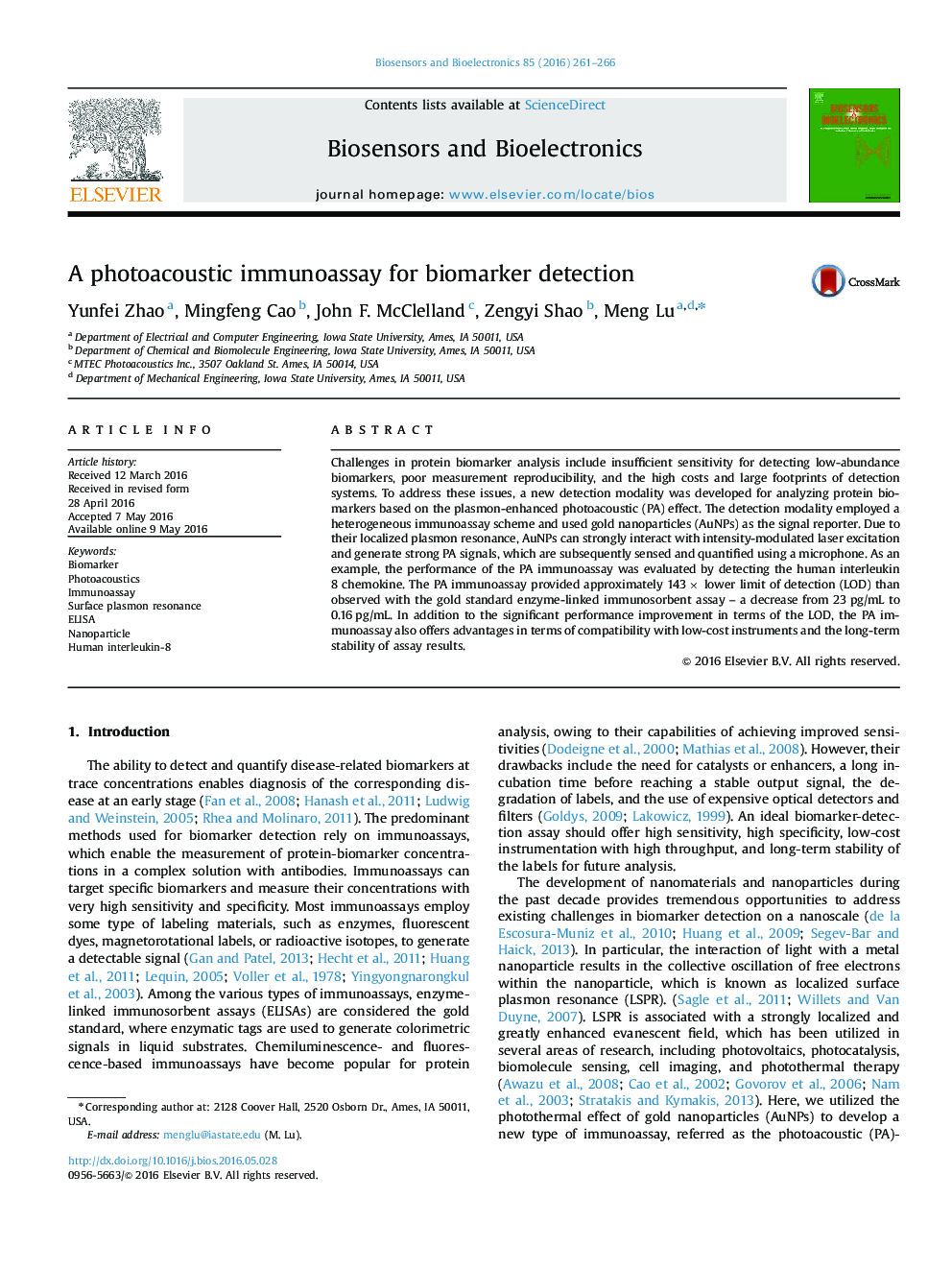| Article ID | Journal | Published Year | Pages | File Type |
|---|---|---|---|---|
| 7230378 | Biosensors and Bioelectronics | 2016 | 6 Pages |
Abstract
Challenges in protein biomarker analysis include insufficient sensitivity for detecting low-abundance biomarkers, poor measurement reproducibility, and the high costs and large footprints of detection systems. To address these issues, a new detection modality was developed for analyzing protein biomarkers based on the plasmon-enhanced photoacoustic (PA) effect. The detection modality employed a heterogeneous immunoassay scheme and used gold nanoparticles (AuNPs) as the signal reporter. Due to their localized plasmon resonance, AuNPs can strongly interact with intensity-modulated laser excitation and generate strong PA signals, which are subsequently sensed and quantified using a microphone. As an example, the performance of the PA immunoassay was evaluated by detecting the human interleukin 8 chemokine. The PA immunoassay provided approximately 143Ã lower limit of detection (LOD) than observed with the gold standard enzyme-linked immunosorbent assay - a decrease from 23Â pg/mL to 0.16Â pg/mL. In addition to the significant performance improvement in terms of the LOD, the PA immunoassay also offers advantages in terms of compatibility with low-cost instruments and the long-term stability of assay results.
Related Topics
Physical Sciences and Engineering
Chemistry
Analytical Chemistry
Authors
Yunfei Zhao, Mingfeng Cao, John F. McClelland, Zengyi Shao, Meng Lu,
